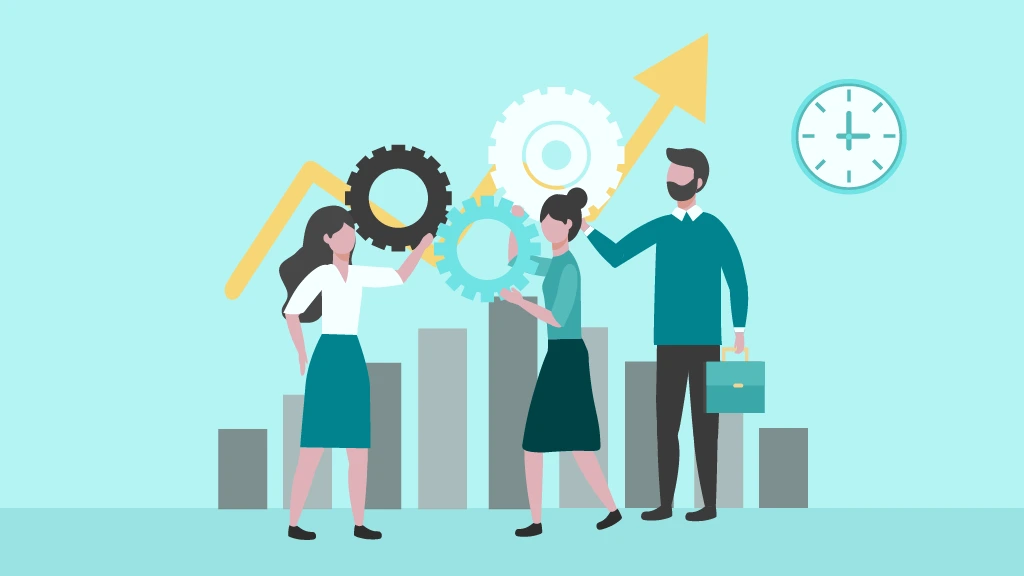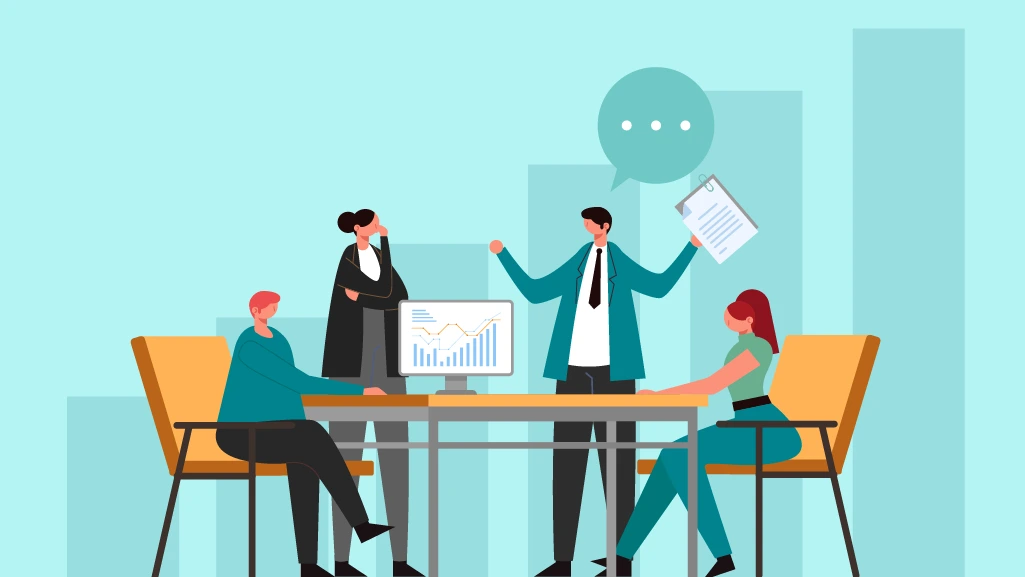
Companies have long used the number of hours worked by an employee as a measure of employee productivity. Hours worked and other traditional metrics of employee productivity are becoming less and less relevant. Simply showing up at work does not guarantee that the work is completed effectively. Rather, we’re seeing a change to a more astute, engagement-based strategy that puts efficiency and incentive first. This new paradigm focuses on working smarter rather than merely harder. Let’s explore eight AI-driven engagement innovations to maximize employee productivity and improve performance and engagement.
The Power of Engagement-Driven Productivity
What constitutes a genuinely productive workplace? Getting the appropriate things done properly and efficiently is more important than simply getting more done. When we define employee productivity, it is about the caliber of work, the impact it makes, and how it advances the business, not just about crossing things off a list.
When employees are motivated, they surpass expectations rather than merely meeting them. A motivated team is more creative, more productive, and more dedicated to the organization’s objectives. On the other hand, a disengaged staff may result in burnout, lost opportunities, and blocked innovation. The secret is creating an atmosphere at work where staff members feel appreciated, encouraged, and motivated to give their best efforts. Businesses may increase performance, stimulate innovation, and establish a culture where employees genuinely want to provide their best effort by putting an emphasis on engagement-driven productivity.
Revolutionizing Workplace Efficiency
More significant than merely raising productivity is creating an environment where people feel motivated, appreciated, and inspired to perform at their best. Engaged workers do more than just show up for work; they participate, collaborate, and grow.
Here’s how emphasizing participation might increase productivity at work:
- Improved Creativity: Employees contribute new ideas when they are motivated and feel connected. Better problem-solving and creative solutions result from engagement, which stimulates creativity.
- Increased Customer Satisfaction: Contented, driven staff members inherently deliver superior customer service, which fortifies client bonds and fosters more loyalty.
- Enhanced Profitability: Time and resources are saved when a highly engaged team works more effectively. Increased productivity and a direct improvement in the company's financial performance are the outcomes.
- Improved Talent Retention: Employees are far less inclined to hunt for other chances when they feel appreciated and involved. A more stable, seasoned workforce is the result of lower turnover.
- Stronger Company Culture: A more positive, people-first workplace where employees are proud to be a part of the team is promoted via engagement. Long-term success is strengthened, and top talent is drawn to companies that have strong cultures.
By prioritizing engagement, companies don’t just improve productivity—they create a workplace where employees thrive, customers stay loyal, and business performance soars.
8 Ways to Productive Teams
An environment where employees feel appreciated, inspired, and connected to their work is more important for increasing productivity than pressurizing them to put in more effort. Here are some innovative, engagement-based strategies to maintain team morale and peak performance.
1. Conversational Recognition: Real-Time Appreciation That Feels Human
A simple “great job” at the right moment can do more to increase employee morale than a formal quarterly award. Employees want recognition that feels personal, not robotic. Conversational recognition allows appreciation to happen naturally—whether through a quick message, a verbal shout-out, or an instant thank-you. Employees feel appreciated not just during performance reviews but every day, thanks to these little heartfelt work appreciation messages.
2. Smart Task Matching: Aligning Work to Energy and Focus Levels
Do you ever find that certain jobs seem easy in the morning but exhausting in the afternoon? By matching assignments to employees’ natural energy levels and focus patterns, this smart task matching enables them to perform at their highest level. Businesses can maximize efficiency by using flexible work assignments in place of strict scheduling. The outcome? Workers are more focused on their work and feel less exhausted.
3. Gamified Micro-Engagements: Keeping Momentum Alive
Long workdays can be tedious; however, dividing work into manageable tasks can maintain motivation. Employee engagement can be maintained without feeling overburdened via gamified micro-engagements, such as brief tests, friendly tournaments, or interactive goal tracking. Work becomes less of a slog and more fulfilling as a result of these little victories.
4. Dynamic Incentives: Instant Rewards That Match Employee Needs
A universally applicable reward system frequently falls short. Different things motivate people; some value more vacation time, while others are more interested in material gains. Employees can select the things that are most important to them, thanks to dynamic incentive systems that personalize recognition. Without long approval processes, immediate rewards make recognition feel timely and meaningful, reinforcing positive behaviors in the moment.
5. Emotional Intelligence in Engagement: Understanding Workplace Sentiment
Understanding how employees feel along the road is just as important to a successful workplace as meeting goals. Emotional intelligence plays a significant role in engagement as it helps leaders in identifying decreases in morale before it becomes a more significant problem. Businesses that are aware of workplace sentiment are better able to provide the appropriate assistance when needed, giving workers a sense of worth and inclusion.
6. Personalized Productivity Coaching: Tailored Insights for Every Employee
Every employee works differently, so why use a one-size-fits-all approach to productivity? Personalized productivity coaching helps workers maintain concentration, balance their workload, and prevent burnout by providing real-time insights and recommendations based on work habits. These customized nudges enable staff members to take charge of their performance in a way that suits them best. It could mean reminding them to take a break, giving them time management tips, or offering suggestions for better efficiency.
7. Autonomy Over Supervision: Shifting to Self-Optimization
People don’t like being micromanaged. Employees perform better when they are in command of their own tasks. By providing dashboards that display individual productivity trends and clever workflow recommendations, businesses can assist staff in making well-informed decisions on their assignments. People feel more involved, more responsible, and eventually more productive when they are trusted to manage their time and work as they see fit.
8. Proactive Retention Strategies: Preventing Burnout Before It Happens
Burnout develops gradually; it doesn’t happen all at once. Companies can intervene before workers reach their breaking point if they identify early indicators of disengagement and task mismatches. Simple actions like changing routines, expressing gratitude on time, or offering more assistance can have a significant impact. By creating an atmosphere where workers feel appreciated, encouraged, and inspired, companies can retain top talent by moving from a reactive to a proactive strategy.
When companies prioritize engagement, productivity stops being about just getting more done—it becomes about creating a workplace where people actually want to contribute. And that’s the key to long-term success.
Agentic AI: Unlocking the True Potential of Employee Productivity
Imagine an AI that doesn’t just automate tasks but actively enhances the way employees work. That’s the power of agentic AI. Agentic AI acts in real-time, as opposed to traditional automation, which concentrates on managing repetitive tasks. Examples of this include instantaneously identifying an employee’s contributions or modifying workflows to coincide with periods of high production.
Agentic AI makes sure that momentum is maintained by getting rid of pointless bottlenecks. Employees receive timely recognition, dynamic task assignments, and engagement nudges that keep motivation high. Instead of feeling like productivity is something they have to force, employees experience a natural flow of work that feels both efficient and rewarding. This isn’t just about working harder—it’s about working smarter, with AI as a proactive partner in success.
Engagement as the Engine of Productivity
The goal of the workplace of the future is to create an environment that inspires employees to achieve more, not to force them to do so. Productivity is being driven by employee engagement, and technology is now an active partner in maintaining teams’ motivation and attention rather than merely a supporting tool.
Outdated productivity models are being replaced with dynamic, people-first experiences through engagement methods, including real-time recognition, personalized rewards, and AI-driven workflow modifications. This is about empowerment, not micromanagement or surveillance. When companies embrace these innovations, they unlock the true potential of their workforce, building a culture where employees feel valued, driven, and ready to succeed.






